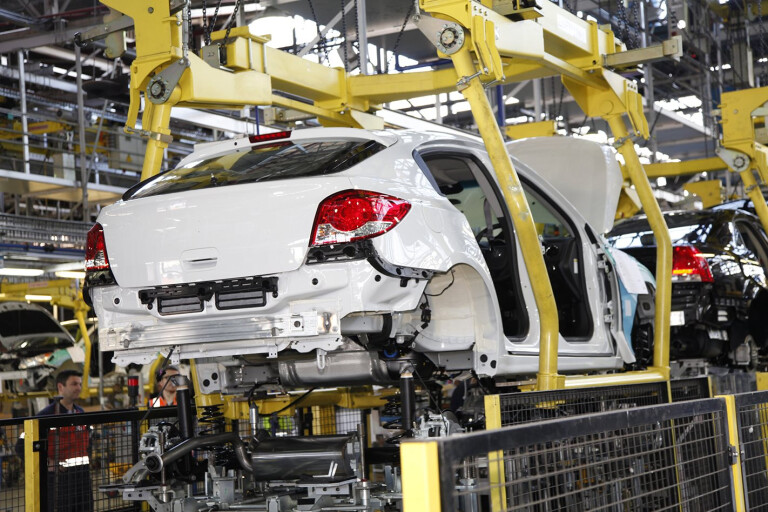
SLOW sales of the locally made Cruze hatch and sedan have forced Holden to reduce the number of cars it builds each day, and the number of workers needed to make them.
Holden announced it will cut production by 20 units a day, falling from 310 to 290 a day, in response to even more pressure on locally made cars as competition for buyers’ interest becomes even keener.
The announcement comes in the same week as Japanese carmaker Nissan bumped up its full-year profit forecast to almost $6.2 billion after a bumper third quarter that resulted in an almost 27 percent jump in revenue.
Toyota reported last week that Japan’s devaluing of the yen had reaped it $2.3 billion last quarter.
Japanese brands in Australia have benefited from moves in their home market to strongly devalue the yen, giving their vehicles a price advantage against Australian-made vehicles.
To add to the pain, Australia’s three remaining car producers were hit with another competitive hurdle earlier this year with ratification of the Japan free trade agreement, which has removed a five percent import tariff.
As part of the line rate reduction, Holden said it would not renew the contracts of 30 casual staff rather than shed full-time positions from its Elizabeth production line in South Australia.
“Fragmentation and competition across the entire automotive industry continues to place pressure on locally built models,” Holden said in a statement released today.
“As a result, it is necessary for Holden to re-rate its Elizabeth facility’s production from 310 cars per day to 290, effective March 2.
“This move will better align production with demand and support our plan of continuing to build world-class cars in Adelaide until the end of 2017.”
Declining volumes as the door closes on Australian production are a constant worry for Ford, Holden and Toyota. Ford plans to exit local manufacturing late next year, while Toyota and Holden will hold out until late 2017.
Ford cut its line rate from 149 a year ago to just 83 in June last year. With both Territory and particularly Falcon sales sliding – the large sedan’s sales fell to a fresh low in January, normally a bad month for fleet sales, where it hit just 381 units – the company will be under more pressure to shed staff.
Likewise, Toyota is struggling with flagging Aurion and Camry sales, in part as some fleet buyers start to relax policies that once favoured Australian-made products.
Toyota Australia’s line rate for Aurion and Camry is holding steady at 370 units a day, but that includes Camry models for export, accounting for about 70 percent of production. That means about 110 cars a day for local consumption.
Australian carmakers’ share of the 1.1 million-plus market fell another 15.2 percent last year, and is off to a shaky start in 2015, falling a further 2.8 percent in January compared with the same month last year.
In 2006, the first year that locally produced cars’ share of the market was split out of the annual sales figures, more than one in five vehicles sold were made here. Last month, that figure was down to just one in 13.

COMMENTS